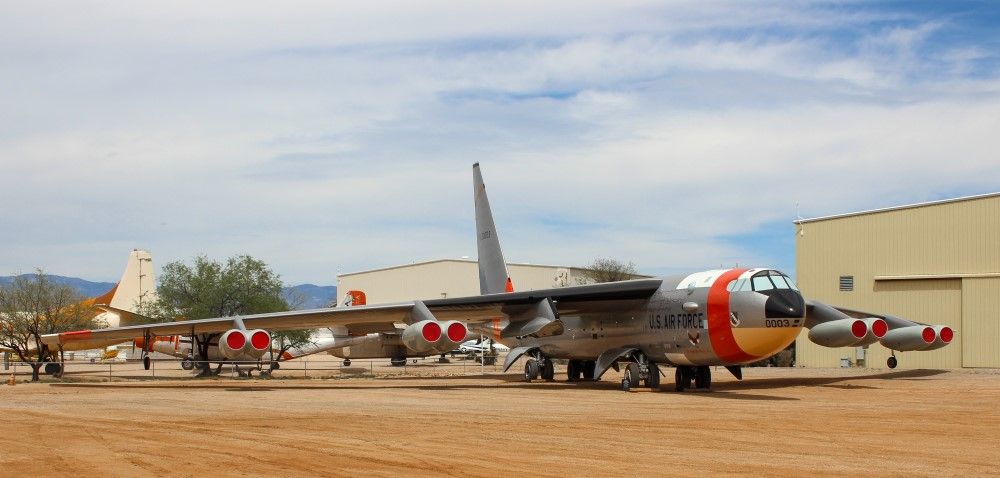Boeing NB-52A (B-52A) Stratofortress
Designed as a long-range heavy bomber to carry nuclear weapons deep into Soviet territory, the B-52 has proven to be a highly adaptable and versatile aircraft. Serving as a strategic nuclear bomber, conventional heavy bomber, and as a test aircraft, the B-52 has flown in the U.S. Air Force for more than sixty years and late models of the Stratofortress are expected to serve until 2040. Design work for what would become the B-52 Stratofortress began in 1945. After several major design changes, the first of the eight-engined bombers took to the air on October 2, 1952. The first of the eight major production variants of the B-52 were built in 1954 with production of the last versions ending in 1963. Only three of the “A” model Stratofrtresses were built and all served solely as test aircraft for both Boeing and the Air Force. The oldest B-52 in existence, this is the third “A” model built. This is one of two B-52s modified to carry the X-15 rocket plane.
Wingspan | 185 ft |
Length | 156 ft |
Height | 48 ft |
Weight | 450,000 lbs (loaded) |
Maximum Speed | 650 MPH |
Service Ceiling | 50,000 ft |
Range | 6,000 miles |
Engines | Eight Pratt & Whitney J57-P-1W turbojets with 9,000 pounds of thrust each |
Crew | 6 |
Manufacturer
Boeing
Markings
Air Force Flight Test Center, Edwards AFB, California, 1960s
Serial Number
52-0003
Designation
B-52A “The High and Mighty One”
